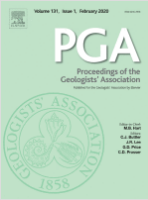The famous Rhaetian bone bed (Late Triassic, 205 Ma) is well known because it marks a major switch in depositional environment from terrestrial red beds to fully marine conditions throughout the UK and much of Europe. The bone bed is generally cemented and less than 10 cm thick. However, we report here an unusual case from Saltford, near Bath, S.W. England where the bone bed is unconsolidated and up to nearly 1 m thick. The exposure of the basal beds of the Westbury Formation, Penarth Group includes a bone bed containing a diverse Rhaetian marine microvertebrate fauna dominated by sharks, actinopterygian fishes and reptiles. Despite the unusual sedimentary character of the bone bed, we find similar proportions of taxa as in other basal Rhaetian bone beds (55–59 % Lissodus teeth, 13–16 % Rhomphaiodon teeth, 12–14 % Severnichthys teeth, 6–9% Gyrolepis teeth, 3–4% undetermined sharks’ teeth, 1–3% undetermined bony fish teeth, and < 1% of each of Hybodus, Parascylloides, and Sargodon), the only differences being in the proportions of Rhomphaiodon teeth, which can represent 30–40 % of specimens elsewhere. This suggests that taphonomic bias of varying Rhaetian bone beds may be comparable despite different sedimentary settings, and that the proportions of taxa say something about their original proportions in the ecosystem.

